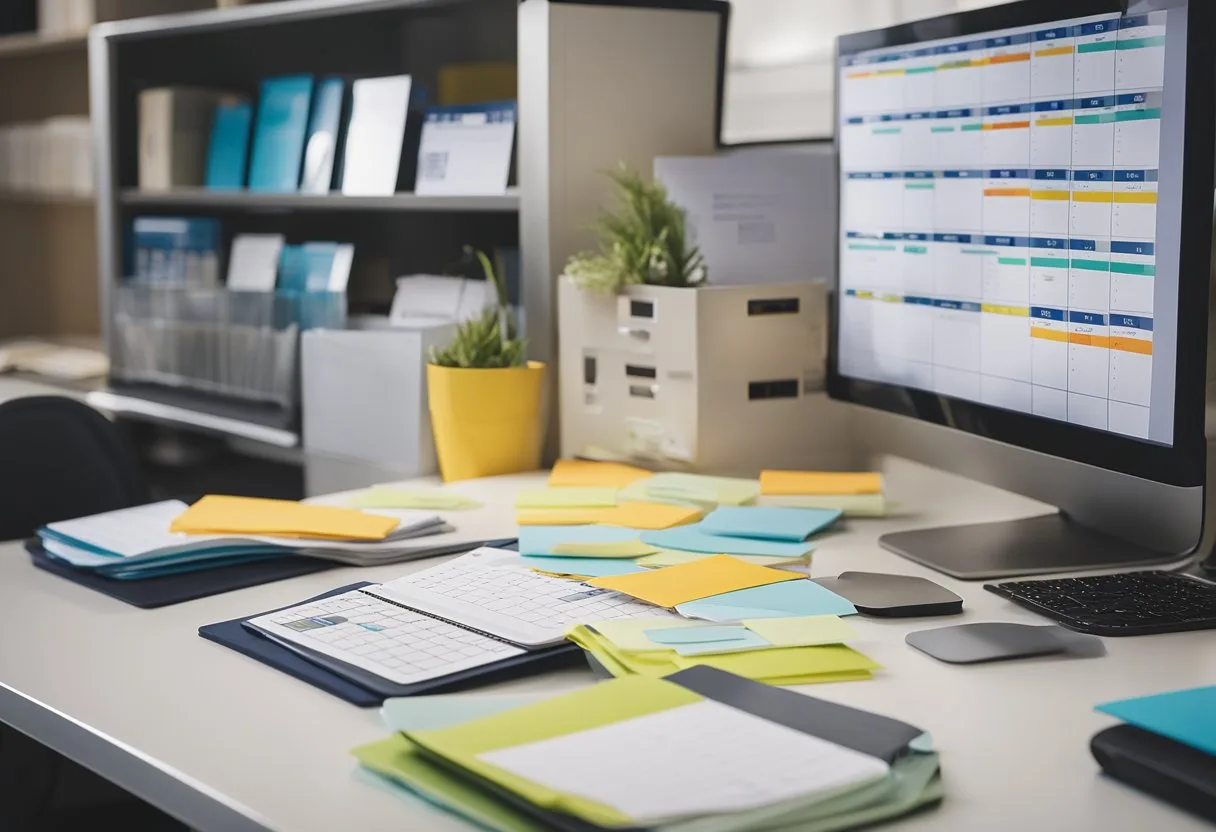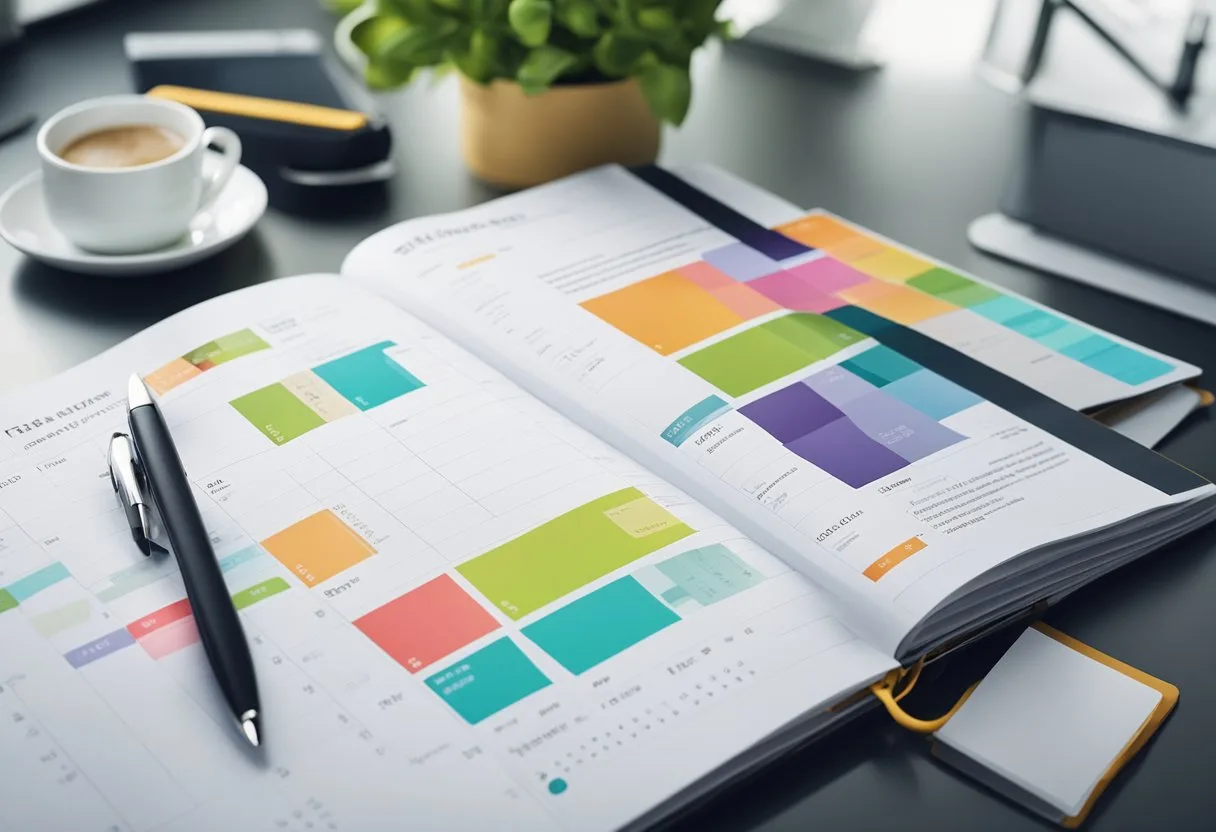Planner organization ideas are essential for anyone looking to increase their productivity and manage their time effectively. A planner can be an incredibly useful tool, but it can also become overwhelming if not organized properly. With the right planner organization ideas, individuals can make the most of their planner and stay on track with their goals.
One key planner organization idea is to categorize tasks and events. This can be done by using color coding, labels, or different sections of the planner. By categorizing tasks and events, individuals can quickly see what needs to be done and prioritize accordingly. Another useful planner organization idea is to set aside time each day or week to plan and review the planner. This can help ensure that nothing is overlooked and that deadlines are met.
Functional stickers can also be a great planner organization idea. They can be used to highlight important tasks, mark deadlines, and even add a bit of fun to the planner. Choosing the right planner is crucial for effective organization. There are many different types of planners available, from digital to paper, and each has its own benefits and drawbacks. By considering personal preferences and needs, individuals can find the planner that works best for them.
Choosing the Right Planner
Choosing the right planner is an essential step towards effective planner organization. With so many different options available, it can be overwhelming to decide which one to choose. In this section, we will discuss some of the factors to consider when selecting a planner.
Paper vs. Digital Planner
One of the first decisions to make when choosing a planner is whether to go with a paper or digital version. Both options have their advantages and disadvantages, and the choice ultimately depends on personal preference and lifestyle.
Paper planners offer a tactile experience and can be customized to suit individual needs. They are ideal for those who prefer a hands-on approach and enjoy the satisfaction of physically crossing off completed tasks. On the other hand, digital planners are more portable and can be accessed from anywhere with an internet connection. They are ideal for those who are always on-the-go and need to access their planner from multiple devices.
Essential Features to Consider
When choosing a planner, there are several essential features to consider. These include:
- Size: A planner should be the right size for your needs. Consider how much space you need for daily, weekly, and monthly planning.
- Layout: The layout of a planner should be intuitive and easy to use. Consider whether you prefer a horizontal or vertical layout, or an hourly or daily breakdown.
- Durability: A planner should be durable enough to withstand daily use. Consider the quality of the binding, cover, and paper.
- Customizability: A planner should be customizable to suit your needs. Consider whether you need space for notes, habit tracking, or meal planning.
Setting Up Your Planner
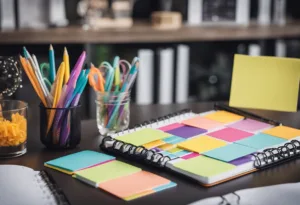
When it comes to setting up a planner, there are a few things to keep in mind to ensure that it is organized and effective. This section will cover three main aspects of setting up a planner: starting with goals, creating a planning system, and organizing sections and categories.
Starting with Goals
Before setting up a planner, it is important to have a clear understanding of what goals need to be achieved. This will help in selecting the right planner and deciding what sections and categories to include. Goals can be divided into long-term and short-term goals. Long-term goals can be broken down into smaller milestones, which can be tracked in the planner.
Creating a Planning System
A planning system is a set of rules and methods used to manage tasks and time. It can include things like daily, weekly, and monthly planning, as well as tracking progress and setting reminders. A good planning system should be easy to use and flexible enough to adapt to changing needs. It is also important to make sure that the planning system is aligned with the goals that were set.
Sections and Categories
Organizing the planner into sections and categories is another important aspect of setting it up. This will make it easier to find information and keep everything organized. Some common sections include calendars, to-do lists, notes, and contacts. Categories can be used to further organize information within each section. For example, within the notes section, categories can include work notes, personal notes, and ideas.
Setting up a planner involves starting with goals, creating a planning system, and organizing sections and categories. By keeping these things in mind, it is possible to create a planner that is organized and effective in achieving goals.
25 Planner Organization Ideas
- Color-Coding: Assign different colors to various types of tasks (work, personal, health) for quick visual reference.
- Stickers and Symbols: Use stickers or draw symbols to denote important tasks, events, or appointments.
- Indexing: Create an index at the beginning or end of your planner to quickly find notes or important pages.
- Tabs and Dividers: Use tabs to separate months, weeks, or sections like goals, finances, and to-do lists for easy navigation.
- Time Blocking: Divide your day into blocks of time dedicated to specific activities or tasks and stick to these time frames.
- Priority Matrix: Draw a four-quadrant matrix to prioritize tasks by urgency and importance.
- Checklists: Create checklists for daily routines, packing, or grocery shopping to ensure you don’t forget anything.
- Monthly Overview: Use the monthly spread to note key dates and events before detailing them in weekly/daily views.
- Weekly Spread Enhancements: Add sections to your weekly spread for meal planning, exercise, or tracking a particular project.
- Daily Focus: At the top of each day, write down the main focus or goal to keep your priorities in check.
- Habit Tracker: Include a habit tracker for daily habits you’re working to maintain or establish.
- Goal Breakdown: Write your goals and then list actionable steps beneath each one to break them into manageable tasks.
- Project Planning Pages: Dedicate pages for project planning, outlining objectives, deadlines, and action items.
- Financial Tracker: Keep a section for budgeting, tracking expenses, or monitoring savings and bills.
- Inspirational Quotes: Add motivational quotes to the start of each week or month for encouragement.
- Birthday and Anniversary Log: Have a section where all important dates are listed so you can plan for them in advance.
- Top 3 Tasks: Start each day by identifying the top three tasks that need to be completed.
- Routine Outlines: Write down your morning and evening routines to establish consistency.
- Brain Dump Section: Keep a space for jotting down random thoughts or ideas that come to you throughout the day.
- Meal Planning: Outline your meals for the week, including a grocery list to streamline shopping and cooking.
- Yearly Goals Review: At the end of your planner, have a section to review the year’s goals and assess your progress.
- Future Log: Keep a future log for events or deadlines that are several months away.
- Contact Pages: Maintain a section for important contacts that you may need to reach quickly.
- Reflection Space: At the end of each week or month, have a space to reflect on what went well and what could be improved.
- Personalization: Decorate your planner with drawings, washi tape, or photos to make it uniquely yours and enjoyable to use.
Daily and Weekly Planning Ideas
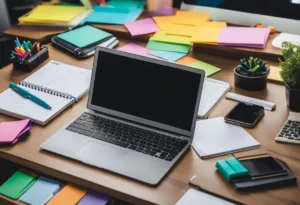
Structuring Your Daily Schedule
When organizing your planner, it is essential to have a clear understanding of your daily schedule. A daily planner is an effective tool for keeping track of your tasks, appointments, and events. To structure your daily schedule, you can use a table or a list to write down your tasks for the day.
You can also use color-coding to differentiate between different types of tasks, such as work-related tasks and personal tasks. You can use symbols or icons to denote the priority level of each task.
It is also important to allocate time for breaks and self-care activities in your daily schedule. This can help prevent burnout and increase productivity. You can set reminders for breaks and self-care activities in your planner to ensure that you are taking care of yourself throughout the day.
The Art of Weekly Planning
Weekly planning is an effective way to stay organized and on top of your tasks and appointments. A weekly planner can help you plan out your week in advance, allowing you to allocate time for important tasks and events. When using a weekly planner, it is important to have a clear understanding of your priorities for the week. You can use a table or a list to write down your tasks for the week, and use symbols or icons to denote the priority level of each task.
In addition to tasks and appointments, it is also important to allocate time for self-care activities and hobbies in your weekly planner. This can help prevent burnout and increase overall well-being. You can set reminders for self-care activities and hobbies in your planner to ensure that you are taking care of yourself throughout the week.
Structuring your daily schedule and utilizing weekly planning can help you stay organized, increase productivity, and improve overall well-being. By using a daily planner and a weekly planner, you can effectively manage your tasks, appointments, and events, while also making time for self-care activities and hobbies.
Effective Task Management
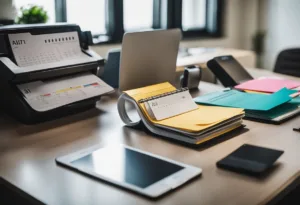
Task management is a crucial aspect of planner organization. It helps individuals to prioritize their tasks and manage their time efficiently. Effective task management involves prioritizing tasks, creating to-do lists, and checklists.
Prioritizing Tasks
Prioritizing tasks is essential to ensure that the most important and urgent tasks are completed first. It is important to identify tasks that are urgent and need to be completed immediately, and tasks that are important but not urgent.
To-Do Lists and Checklists
To-do lists and checklists are effective tools for task management. They help individuals to keep track of their tasks and ensure that nothing is forgotten. To-do lists can be created daily, weekly, or monthly, depending on the individual’s needs. Checklists are useful for ensuring that all the necessary steps are completed for a particular task or project.
To maximize the effectiveness of to-do lists and checklists, it is important to include all necessary tasks, deadlines, and important dates. It is also important to break down larger tasks into smaller, more manageable tasks. This helps to avoid feeling overwhelmed and ensures that progress is being made.
Effective task management is crucial for planner organization. By prioritizing tasks and using to-do lists and checklists, individuals can manage their time efficiently and ensure that all tasks are completed in a timely manner.
Staying Organized with Your Planner
Keeping your planner organized is key to staying on top of your tasks, projects, and goals. By regularly reviewing and updating your planner, you can ensure that you don’t miss any important deadlines or appointments. Here are some tips for staying organized with your planner:
Regular Reviews and Updates
One of the most important things you can do to stay organized with your planner is to regularly review and update it. Set aside time each week to review your planner and make any necessary updates. This can include adding new tasks, moving tasks around, and updating deadlines.
During your weekly review, take the time to reflect on your progress and evaluate your priorities. Are there any tasks or projects that are no longer important or relevant? Are there any new tasks or projects that you need to add to your list? By regularly reviewing and updating your planner, you can ensure that you are always working on the most important tasks and projects.
Keeping Track of Various Projects
If you have multiple projects that you’re working on, it can be helpful to keep track of them in your planner. Create a section in your planner for each project and include all relevant notes, deadlines, and reminders.
When working on a project, break it down into smaller tasks and assign deadlines to each task. This will help you stay on track and ensure that you’re making progress towards your goal. Use bold or italic formatting to highlight important tasks or deadlines.
By keeping track of various projects in your planner, you can ensure that you’re making progress towards your goals and staying organized. Use tables or lists to help organize your tasks and projects.
Customization and Personalization
When it comes to planner organization, customization and personalization are key. By adding a personal touch to their planner, individuals can make it more enjoyable to use and easier to navigate. Here are some ideas for personalizing and customizing a planner:
Using Colors and Symbols
One way to customize a planner is by using color-coding and symbols. This technique involves assigning a different color or symbol to each category or task on the planner. For instance, green can represent work-related tasks, blue can represent personal tasks, and orange can represent appointments. This method helps to distinguish between different tasks and categories at a glance, making it easier to stay organized.
Incorporating Stickers and Accessories
Another way to personalize a planner is by incorporating stickers and accessories. Planner stickers are available in a variety of styles, colors, and themes, and can be used to add a pop of color or visual interest to a planner. Washi tape, dividers, and tabs can be used to separate different sections of the planner, making it easier to navigate.
Customization and personalization are essential when it comes to planner organization. By using colors, symbols, stickers, and accessories, individuals can create a planner that is tailored to their needs and preferences.
Integrating Life Management
When it comes to planner organization, it’s important to integrate all aspects of life management into the planner. This includes family and home organization, health and fitness, and meal planning. By doing so, individuals can ensure that their planner is a one-stop-shop for all their organizational needs.
Family and Home Organization
Family and home organization can be a daunting task, but with the right planner, it can be made much easier. One useful tip is to create a family schedule that includes everyone’s activities and appointments. This can be done by color-coding each family member’s appointments and activities. Another useful tip is to create a home cleaning schedule. This can be done by creating a list of cleaning tasks that need to be done on a daily, weekly, and monthly basis.
Health, Fitness, and Meal Planning
Health, fitness, and meal planning are important aspects of life management that can also be integrated into a planner. One useful tip is to create a workout plan that includes specific exercises and workout routines. This can be done by creating a list of exercises and workout routines that need to be done on a daily or weekly basis. Another useful tip is to create a meal plan that includes specific meals and snacks.
This can be done by creating a list of meals and snacks that need to be prepared on a daily or weekly basis. By integrating these tasks into the planner, individuals can ensure that they stay on top of their health, fitness, and meal planning responsibilities.
Integrating all aspects of life management into a planner can be a great way to stay organized and on top of responsibilities. By following the above tips for family and home organization, health and fitness, and meal planning, individuals can ensure that their planner is a one-stop-shop for all their organizational needs.
Advanced Planning Techniques
Long-Term Planning and Tracking
Long-term planning is an essential component of any planning system. It helps individuals to set goals and track progress over an extended period. A great way to achieve this is by creating a long-term planner that outlines goals, deadlines, and milestones. This planner should be reviewed regularly to ensure that progress is being made towards achieving the set objectives.
Tracking is equally important when it comes to long-term planning. It helps individuals to monitor their progress and make necessary adjustments to their plans. A great way to track progress is by using a system that allows individuals to log their progress regularly. This could be in the form of a spreadsheet, a bullet journal, or a dedicated app.
Leveraging Technology and Apps
Technology has revolutionized the way we plan and organize our lives. There are several apps and tools available that can help individuals plan and organize their lives better. Google Calendar is one such tool that can be used to plan and track events, deadlines, and appointments. It can be synced across multiple devices, making it easy to access and update on-the-go.
Another great app for planning and organization is Trello. It is a digital planner that allows individuals to create boards, lists, and cards to organize their tasks and projects. It also has a built-in calendar that can be used to track deadlines and appointments.
In addition to these apps, there are several other tools and resources available that can help individuals plan and organize their lives better. It is essential to find a system that works best for each individual and stick to it consistently.
Frequently Asked Questions
What are the best systems for organizing a planner effectively?
The best system for organizing a planner effectively is one that works for you. Some people prefer to use a daily to-do list, while others prefer to use a weekly or monthly planner. It is important to find a system that suits your needs and lifestyle. You can try using different colors, labels, or symbols to categorize your tasks and events.
What are some creative methods to make planning enjoyable?
Planning can be made enjoyable by adding a touch of creativity to it. You can try using stickers, washi tapes, or colored pens to decorate your planner. You can also use inspiring quotes or motivational messages to keep yourself motivated. You can try setting a theme for each month or week to make planning more fun.
How can color coding enhance planner organization?
Color coding is an effective way to enhance planner organization. By assigning different colors to different categories, you can easily identify and prioritize your tasks and events. For example, you can use red for urgent tasks, green for personal tasks, and blue for work-related tasks. This will help you stay organized and on top of your schedule.
What steps are involved in setting up a planner for academic success?
Setting up a planner for academic success involves several steps. First, you need to identify your academic goals and deadlines. Then, you can create a study schedule that fits your needs and preferences. You can also use your planner to track your progress and achievements. You can use color coding to differentiate between different subjects and assignments.
What are the essentials for beginners to use a planner efficiently?
The essentials for beginners to use a planner efficiently are a planner, a pen or pencil, and a positive attitude. It is important to choose a planner that suits your needs and preferences. You can also use different colored pens or stickers to make planning more fun and engaging. It is important to set realistic goals and prioritize your tasks.
What strategies can improve one’s planning and organizing skills?
There are several strategies that can improve one’s planning and organizing skills. First, it is important to identify your priorities and goals. Then, you can create a schedule that fits your needs and preferences. You can use different tools and techniques, such as color coding, to stay organized and on top of your schedule. Finally, it is important to review and adjust your plan regularly to ensure that you are on track.

